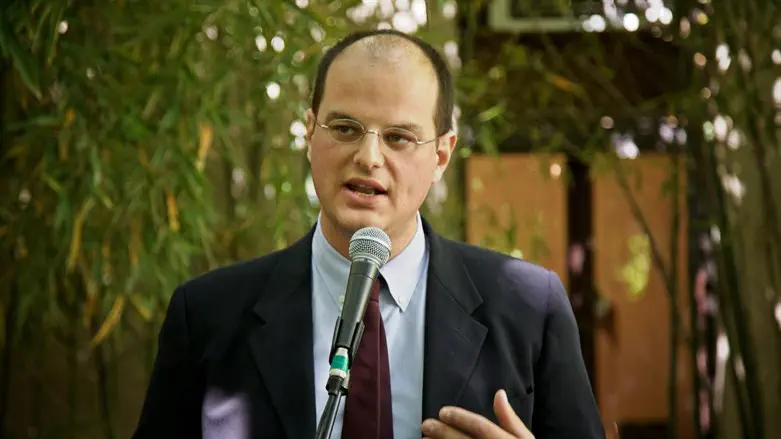
With the wave of mass migration towards Europe we are faced with the greatest upheaval of European identity since the times of the Spanish Reconquista and the Ottoman wars. Italian PM Giorgia Meloni said that "millions" will come, after 10.000 migrants landed in the Italian island of Lampedusa.
History teaches that all civilizations, regardless of technological level, are subject to mass migrations once they reach senescence and that, sooner or later, they see their identities and social cohesion threatened.
In 2022 alone, the European Union welcomed 1 million asylum seekers, not counting the flows of regular immigrants. Even if the numbers remained the same, by the end of the century they would be 100 million out of a population of 400 million, a third of whom are over 65. The repopulation and change of civilization would be complete.
The best-known example comes, obviously, from classical antiquity. The tribes moved from the Germanic regions to the Roman Empire, destroying its institutions and infrastructure and forming their own kingdoms, which, ultimately, led to the fragmentation and dissolution of the Empire.
There is the ancient civilization of the Sumerians, a sedentary society threatened by the nomadic people of the Amorites, who arrived from northern Mesopotamia. A similar evolution is known in Pharaonic Egypt. Here it was the Libyans of the western desert and the Canaanite peoples of the east who settled in the delta region, as prisoners of war, as mercenaries, as simple immigrants.
European countries in the 20th and 21st centuries have mortgaged their future with a series of individual decisions in what the historian Georges Bensoussan has defined as "the great demographic-migration shock".
Sweden. In 1975 it introduced multiculturalism with the social democratic prime minister Olof Palme. Fast forward to 2014, when Prime Minister Fredrik Reinfeldt called on fellow citizens to "open their hearts" to refugees from around the world: "I ask the Swedish people to be patient and supportive, in the long term we will create a better world." In one year, Sweden welcomed 163,000 people. The equivalent of 1.6 percent of the total population. As if Italy had let in 600,000 migrants in a year. Sweden never recovered.
France. 1976 is the year of Valéry Giscard d'Estaing's "family reunion". The idea of bringing immigrant families seemed, at the time, natural and right. But with the massive increase in immigration from Muslim countries this has proven to be a fatal mistake. Raymond Barre suspended it for three years, before the Council of State annulled the decision, arguing that family reunification was "now part of the general principles of law". It starts with the wife and her children, then come the wife's parents, the other children of the wife's parents and their children. And so on, in a demographic chain that has become repopulation.
Germany. Here, more than a date (31 August 2015), there is the slogan: "Wir schaffen das". One million Muslim Syrians enter. Europe's most powerful country told the others: "The EU's external borders will not be defended."
Belgium. The liberal senator Alain Destexhe in the book “Immigration et Intégration: avant qu'il ne soit trop tard” writes: “Relative to its population, Belgium has experienced a more important migration shock than France, Germany or the Netherlands! In twenty years, Belgium has naturalized 600,000 to 700,000 people, that is, 5 or 6 percent of the population, not to mention illegal immigrants and asylum seekers. From 2000 to 2010, Belgium welcomed more than one million migrants out of a population of eleven million."
What scenarios await Europe regarding immigration?
The answer, even more pessimistic than mine, is provided by a book written by a French scholar, Stephen Smith, and the book is “Escape to Europe. Young Africa towards the old continent”. “The situation is reminiscent of Mexico in the 1970s,” Smith writes about Europe. “Before that time, only a small portion of the population could scrape together the means to cross the Rio Grande and settle in the United States. Between 1975 and 2010, ten million Mexicans immigrated to America both legally and illegally. In all, including their U.S.-born children, Mexican-Americans now form a community of 30 million people, 10 percent of the U.S. population. If Africans followed that example between now and 2050, Europe's population would include 150 to 200 million African-Europeans, counting immigrants and their children. In just over thirty years, between a fifth and a quarter of the population in Europe would be of African origin. I can imagine how Europeans might tremble at the thought. Their fears are not unfounded at all."
The scenario that Smith calls “Eurafrica”. Solutions? The first is what Smith calls “Fortress Europe”. “Jean-Christophe Rufin – with acumen bordering on clairvoyance – predicted this after the fall of the Berlin Wall in his 1991 book 'L'Empire et les nouveaux barbares': the reconstruction of a limes – the border wall of Roman Empire – as a means of protecting European civilization. But the dams that can be erected will not be enough to stop the many waves that await us." The second solution is the “return to the protectorate”. Taking charge of Africa again. But in the time of atonement, of woke, of cultural decolonization and of the permanent process of "Eurocentric civilization", we would no longer be capable of it.
Paul Valéry said it in 1919: “We know that civilizations are mortal. We had heard of entire worlds disappearing, of empires collapsing. We saw through the depth of history, the ghosts of immensity, the ships full of wealth and spirit."
Will Europe be able to preserve its ship of Theseus, escaping the disastrous fate of the sinking of civilizations and ensuring that Judeo-Christian treasures reach the shores of the next generations?
